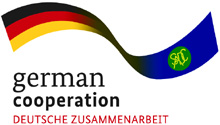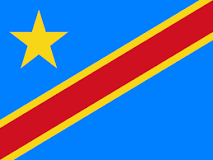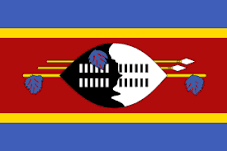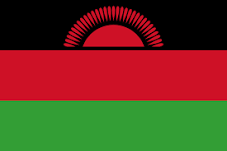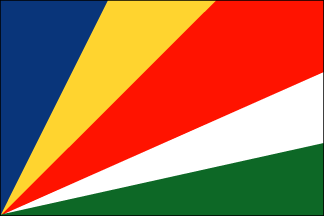Big Nsomba Boosts Aquaculture In Zambia

BIG Nsomba, as the name suggests, refers to table-size fish. Big Nsomba is about to become a household name in the Luanshya district on the Copperbelt. It is a cooperative society; whose focus is uniquely fish farming. This idea was birthed after the group realised a niche market for fish in the district.
Big Nsomba transitioned from a farmer group to what it is today. Despite the group conceiving workable ideas for exploring the fish market, they lacked adequate technical skills and management practises to ensure they grew quality fish, such as how to construct recommended fish ponds, feeding and fish management.
Big Nsomba Chairperson Perpino Chikumbi narrates that the group comprised 150 members and was linked to the Enhanced Smallholder Agribusiness Promotion Programme (E-SAPP) in 2020. They undertook training on how to keep fish for six months on fish management, entrepreneurship and record keeping. These lessons were vital for the group to take stock of their production process and track their progress.
“The farmers appreciated the training structured in the Farming As A Business Schools (FaaBS) Group. Not only was the training informative, but the fact that farmers learnt by seeing others doing what they were being trained for made them realise the reality of the intervention lessons being offered,” he said.
Mr Chikumbi further explained that the group was assessed, and a first disbursement grant of K1,202,258.95 was released to set up their aspirations of a fish processing plant to enable them to produce fish feed.
The cooperative procured the processing equipment, which is yet to be installed. The rationale behind setting up the processing plant is to produce fish feed for the Big Nsomba farmers, which they purchase at a subsidised rate while non-members would buy at a higher price. In this way, the group will make a profit return as they strive to exploit the local market with feed which is currently very expensive for the local farmers.
“We saw the need to exploit the fish market by engaging in the aquaculture intervention. The group’s idea came to fruition upon realising they had vast tracts of land which they could utilise by constructing fish ponds and also a source for financial support to process fish feed,” explained Mr Chikumbi
However, the group is still awaiting authorities to resolve the issuance of alternative land to install the processing plant at a strategic place. The sooner this bottleneck is resolved, the better for the farmers, as they will contribute to the current annual fish deficit of approximately 87,000.
Once fully operational, the group is expected to produce 4,000 by 25 kilogramme bags of fish feed in the first year. This will be based on the concept of the out-grower scheme. Fish feed will be sold to 100 members on cash and credit terms during the first year at K350 per 25 kilogramme bag, and another 100 farmers during the second year. Non-members will also buy fish feed to make a profit to sustain the group’s operations.
One ardent fish farmer and group member, Getrude Mwanza, explained that she constructed one fish pond and stocked it with fingerlings after the training. As a group, they accessed 5,000 fingerlings from a fellow fish farmer and shared them equally among group members. After the first harvest, which was after six months, she harvested 100 kilogrammes of fish and realised K5,000 from the sales, which assisted in building an iron-roofed house and paying for her children’s school fees. This first harvest motivated her to construct six other fish ponds while awaiting fingerlings and inputs.
“You see, with fish farming, the focus should be properly constructed fish pond, regular feeding and monitoring water monitors and a specific bird which often preys on the fish,” Ms Mwanza said.
Currently, fish farmers are facing the challenge of lack of access to fingerlings and the high cost of fish feed which needs to be looked into if this value chain is to flourish to unimaginable levels.
“The cost of fish feed is K490 which is too expensive for us [fish] farmers. It will be good for farmers to make their feed once the plant is installed and operationalised,” disclosed Ms Mwanza.
She said farmers had been stimulated to venture into fish farming given that it is not labour-intensive compared to other value chains.
Another fish farmer, Ronica Milupi, purchased 2,200 fingerlings after undergoing training through the FaaBS over eight months.
“In the past years, I just used to keep fish in a disorganised manner as I did not know the proper ways of keeping fish. But after undergoing structured lessons in FaaBS, I have learnt better ways of constructing fish ponds and their management,” Ms Milupi testified.
These sentiments typically reflect lessons learnt in the aquaculture value chain where farmers can easily penetrate the market. This can only happen if they engage in good fish management, including regular feeding to ensure they have table-size fish which is tasty and profitable. Farmers needed to organise themselves as a group to enhance their bargaining power and sell to an organised market to tap into the readily available market. This approach will help address the fish deficit estimated at approximately 87,000 metric tonnes.
Now that farmers know the fishing prospects and their tangible benefits, they are attracted to fish farming. The fish deficit is expected to be addressed in the long term. Admittedly, value addition and processing have been lacking for a long time in the fish sector. Clearly, Big Nsomba has taken a step in the right direction, which is a positive stride and needs to be sustained even after the phase-out of the programme interventions.
The author works as a Principal Agricultural Information Officer at the National Agricultural Information Services(NAIS)










